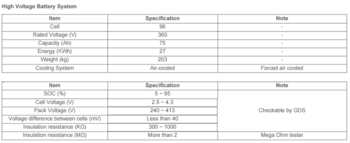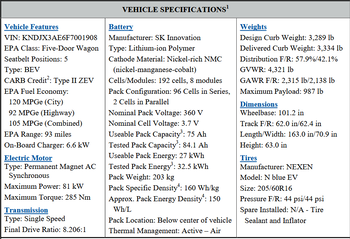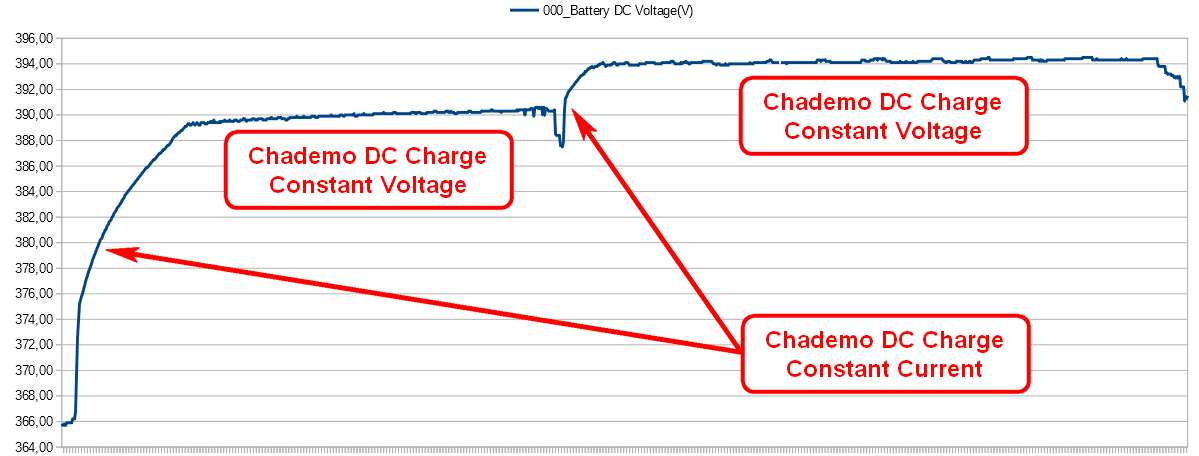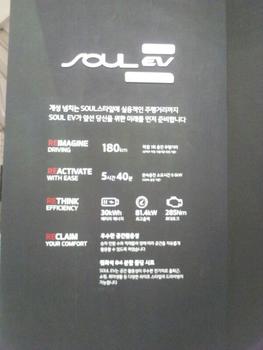-
Am working though the details of this slowly, am editing this as I go.
The actual increase in usable battery energy capacity seems to be 11% (from 27kWh to 30kWh)
This is achieved by
Increasing the number of cells by 4% (from 196 to 200)
Improving the cell capacity by 7% (from 75Ah to 80Ah)
We don't know what the total energy capacity is but from these figures I don't think the have changed the ratio of unused capacity used as a buffer at the top. It seems reasonable to assume an 11% increase in total energy capacity. (from 30.5kWh to 33.8kWh)
The nominal voltage of the battery has increased because there are more cells in series. (from 360V = 3.75V * 96 to 375V = 3.75V * 100)
The nominal cell voltage is the same.
I don't know why the battery weight of the existing Soul EV uses a much heavier value than in the manual? Lots of media sites use the heavier weight 277kg for the existing model. It is shown on the kia specs here - http://www.kia.com/uk/new-cars/soul-ev/specification/
All we can say is that the new pack might be 13kg heavier.
It lists an energy density of 205 Wh/kg. This cannot be for the pack. Perhaps it is for a single cell.
Available Discharge Power seems to be the same 90kW. I don't think we'll be getting any increase in speed.
The maximum charging rate for the OBC is 230V / 6.6kW / 27.5A
This is the same as the 2016 OBC version.
The maximum charging rate for DC fast charging is 62kW. same as before.
Below this line are the details for the existing Soul EV battery pack which I am using to compare the new specs.
--------------------------------------------
We know from the Service Manual that the existing battery has the following rated specs.

The actual specs for the existing battery are detailed by AVTA.
Vehicle Specifications and Testing Results

The existing Soul EV has a battery by SK Innovation.
It has 192 polymer pouch type cells, lithium nickel manganese cobalt oxide (NMC) cathode, .... Each 40Ah battery cell has energy density of 200 Wh/kg They are laid out in a series string of 96 sets of 2 parallel cells.
The rated capacity of the pack is 75Ah, whereas the measured total capacity is about 85Ah. Hence the rated capacity of each cell is 37.5Ah whereas actual is about 42Ah. The 2015 Soul EV battery pack is 30.5 kWh and weighs 202.8kg -> Gravimetric Energy Density = 150.4 Wh/kg


















